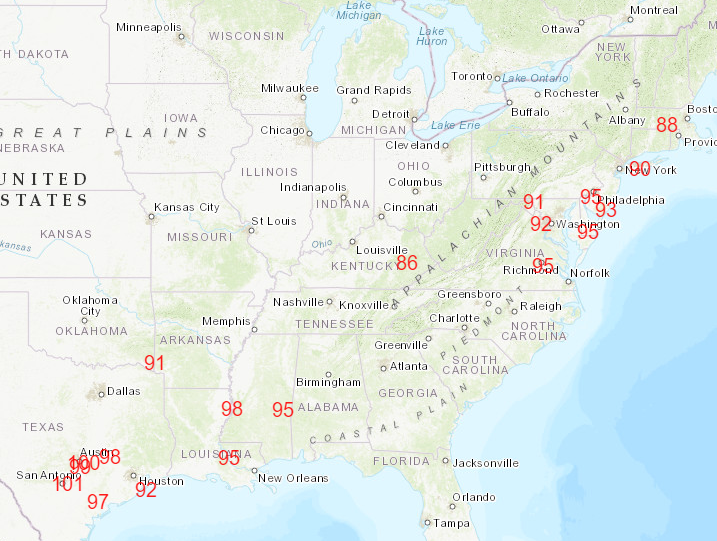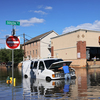[ad_1]

Unusually high temperatures in the South and Northeast U.S. on Saturday broke records marked on the same day in prior years.
National Weather Service
hide caption
toggle caption
National Weather Service

Unusually high temperatures in the South and Northeast U.S. on Saturday broke records marked on the same day in prior years.
National Weather Service
Large portions of the country, stretching from Texas to the Northeast, set new daily temperature records over the weekend.
Well above normal temps continued on Sunday, largely in the Northeast in Connecticut and Massachusetts, said Marc Chenard, a meteorologist with the National Weather Service.
The record-breaking early season heat wave “is not all that common, but it’s not unprecedented by any means,” Chenard said.
Almost 20 million people were under a heat advisory on Sunday afternoon, a number that fell to about 15.8 million by evening.
Scientists have found that climate change both intensifies and drives up the likelihood of heatwaves. While Chenard says he can’t determine whether any one event is caused by climate change, the meteorologist attributes the unusual temperatures to the fluctuations in weather patterns.
“If you think of the pattern as like an ocean wave, when the wave is flatter temperatures tend to be more normal across the country,” he said. “However when the wave becomes more amplified you have bigger peaks and bigger dips in the wave. Where you have the peaks you tend to get warm air moving northward resulting in above normal temperatures … and where you have the dips you get colder air pushing southward resulting in below normal temperatures.”
That’s why, Chenard said, we’re also seeing unusually cold temperatures over portions of the Rockies and Plains this weekend.
Here’s a rundown of the new temperature records for each calendar day that were set this weekend in parts of the Northeast and South, according to the data provided by the NWS on Sunday afternoon. While these numbers are preliminary, the meteorologist added, they are unlikely to change much in the record books, if at all.
May 21
Richmond, Va., hit 95 degrees, breaking its 1962 record by 2 degrees.
Austin, Texas, marked a new high of 100 degrees, up from 99 degrees in 1939.
San Antonio, Texas, reached 101 degrees, jumping from 98 degrees in 1939.
Victoria, Texas, saw a high of 97 degrees, compared to the day’s high of 96 degrees in 1939.
Vicksburg, Miss., reached 98 degrees to break its 1962 record by 4 degrees.
Georgetown, Del., hit 95 degrees, surpassing 94 degrees in 1996.
Hagerstown, Md., logged a 91-degree day, exceeding the 90-degree day in 1941.
Islip, N.Y., tied its 1996 record of 90 degrees.
Atlantic City, N.J., hit 93 degrees for the first time on that day since 1996.
Baton Rouge, La., tied its 1922 record at 95 degrees.
Philadelphia tied its 1934 record of 95 degrees.
Worcester, Mass., tied its 1975 record of 88 degrees.
Jackson, Ky., reached 86 degrees to tie its 2018 record.
The airport in Dulles, Va., hit 92 degrees, tying its 1996 mark.
May 22
The Dulles International Airport in Virginia reached 91 degrees, 2 degrees above the record set on the same day last year.
Westfield, Mass., hit 93 degrees, which breaks the record set last year at 90 degrees.
Worcester, Mass., tied the record for 90 degrees, a mark set in 1992.
Tampa, Fla., hit 96 degrees, a degree higher than its 1975 record.
Sarasota, Fla., matched its 96-degree day record from 1974.
[ad_2]
Source link



Comments are closed.